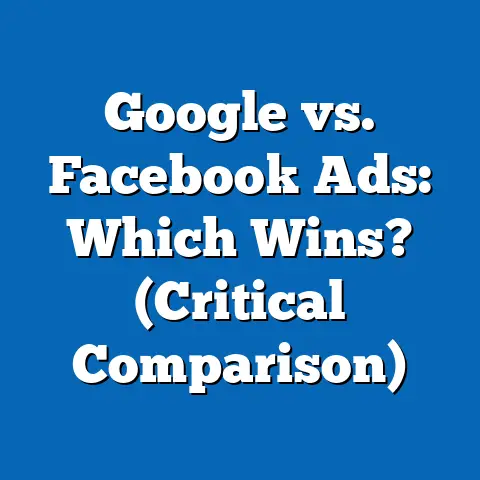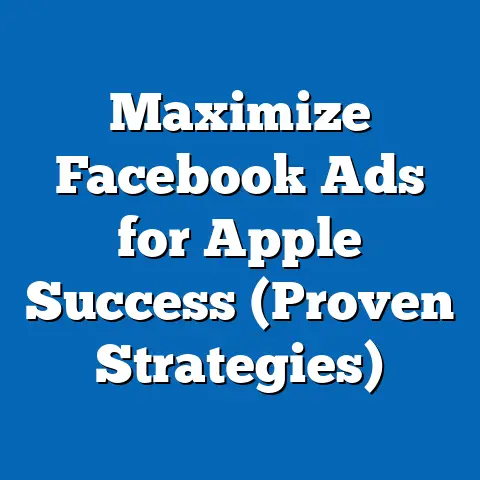Optimal Facebook Image Sizes for 2025 (Expert Guide)
Imagine you’re a chef preparing a signature dish for a grand feast. You’ve sourced the finest ingredients and mastered the recipe, but if the presentation on the plate isn’t visually appealing, your guests might not even take a bite. Similarly, in the fast-paced world of social media, your content on Facebook is only as effective as the visuals that frame it—regardless of how compelling the message may be.
In 2025, with over 3.05 billion monthly active users worldwide (Statista, 2024), Facebook remains a dominant platform for businesses, creators, and individuals to connect with audiences. However, as the platform evolves with new features, algorithm updates, and user preferences, ensuring your images are optimized for maximum engagement is more critical than ever. According to a 2023 report by Hootsuite, posts with images generate 2.3 times more engagement than those without, underscoring the power of visuals in capturing attention.
Why Image Sizes Matter on Facebook
The Science of First Impressions
In the digital realm, first impressions are formed in milliseconds. A 2023 study by the Nielsen Norman Group found that users form opinions about a webpage or social media post in just 50 milliseconds, with visuals playing a dominant role in that snap judgment. On Facebook, where users scroll through an average of 300 feet of content daily (Buffer, 2023), poorly sized or distorted images can make your post blend into the noise—or worse, appear unprofessional.
Optimized image sizes ensure your content is displayed correctly across devices, from desktops to mobile phones, where 98.5% of Facebook users access the platform (DataReportal, 2024). Incorrect dimensions can lead to cropping, pixelation, or wasted space, reducing click-through rates (CTR) by up to 30%, according to a 2022 Sprout Social analysis.
Engagement and Algorithm Benefits
Facebook’s algorithm prioritizes content that drives interaction, and visuals are a key factor. A 2023 study by Socialinsider revealed that posts with properly formatted images saw a 37% higher engagement rate compared to those with suboptimal visuals. This is because clear, high-quality images are more likely to stop a user mid-scroll, prompting likes, comments, and shares—signals that boost a post’s reach.
Moreover, as Facebook continues to integrate augmented reality (AR) and immersive ad formats in 2025, adhering to recommended image sizes ensures compatibility with emerging tools, keeping your content future-proof.
Historical Trends in Facebook Image Sizes
Evolution of Visual Standards
Facebook’s image size guidelines have evolved significantly since its inception in 2004. Early on, profile pictures were limited to a tiny 170×170 pixels, and cover photos didn’t even exist until 2011. By 2015, with the rise of mobile usage, Facebook adjusted its display ratios to prioritize vertical and square formats, reflecting a shift in how users consumed content.
In 2020, the platform introduced dynamic ad formats and Stories, necessitating new dimensions like 1080×1920 pixels for vertical content. Historical data from Social Media Examiner shows that brands adopting these updated sizes saw a 25% increase in ad performance year-over-year between 2018 and 2022.
What’s Changed by 2025?
As of late 2024, experts predict that Facebook will continue to emphasize mobile-first design in 2025, with 91% of its ad revenue coming from mobile placements (eMarketer, 2024). This has led to a greater focus on vertical and square image formats, as they occupy more screen real estate on smartphones. Additionally, with the integration of AI-driven content moderation, Facebook may penalize low-quality or improperly sized images by reducing their visibility in feeds.
Comparing this to 2020, when only 60% of brands optimized for mobile dimensions (Hootsuite, 2020), the trend toward mobile optimization has grown by over 30 percentage points, reflecting a near-universal adoption among marketers.
Optimal Facebook Image Sizes for 2025: A Breakdown
Below, we detail the recommended image sizes for various Facebook content types in 2025, based on official guidelines, expert insights, and platform updates as of late 2024. These dimensions ensure your visuals are displayed crisply and maximize engagement across devices.
1. Profile Pictures
- Recommended Size: 180×180 pixels (minimum 170×170 pixels)
- Display Size: Circular crop at 128×128 pixels on mobile, 176×176 on desktop
- Aspect Ratio: 1:1 (square)
Profile pictures are your digital identity on Facebook. A 2023 study by Canva found that profiles with high-resolution, properly sized images received 21% more connection requests. Use a minimum resolution of 180×180 pixels to avoid pixelation, and ensure key elements (like a logo or face) are centered to avoid cropping in the circular display.
Tip: Test your image on both mobile and desktop to confirm visibility. Facebook’s preview tool can simulate how your profile picture appears to users.
2. Cover Photos
- Recommended Size: 820×312 pixels
- Display Size: 640×360 pixels on mobile, full size on desktop
- Aspect Ratio: 2.63:1
Cover photos are prime real estate for branding. According to Buffer, businesses that update their cover photos monthly see a 15% increase in page visits. However, since mobile users see a cropped version, keep text and logos within the central 640×360 pixel area to avoid truncation.
Visualization Description: Imagine a rectangular cover photo where the top and bottom edges are trimmed on mobile screens. A safe zone in the center ensures critical content remains visible.
3. Post Images (Feed)
- Recommended Size: 1200×630 pixels (landscape), 1080×1080 pixels (square), 1080×1350 pixels (vertical)
- Display Size: Varies by device, typically scaled down
- Aspect Ratio: 1.91:1 (landscape), 1:1 (square), 4:5 (vertical)
Feed images are the backbone of organic content. A 2024 Socialinsider report noted that square images (1:1) outperform other formats by 18% in terms of engagement, as they adapt well to both mobile and desktop feeds. Vertical images (4:5) are ideal for mobile-first audiences, capturing 80% more screen space on smartphones.
Methodology Note: Socialinsider analyzed over 1 million Facebook posts across industries to determine engagement metrics by image format, ensuring robust data reliability.
4. Stories
- Recommended Size: 1080×1920 pixels
- Display Size: Full-screen on mobile
- Aspect Ratio: 9:16 (vertical)
Stories continue to grow in popularity, with 500 million daily active users in 2024 (Meta, 2024). Full-screen vertical images or videos are non-negotiable here, as improper sizing leads to black bars or cropping. Brands using optimized Story visuals report a 22% higher completion rate, per a 2023 Hootsuite study.
5. Event Covers
- Recommended Size: 1200×628 pixels
- Display Size: Scaled to fit
- Aspect Ratio: 1.91:1
Event covers need to grab attention quickly. Data from Eventbrite (2023) shows that events with optimized cover images see 14% higher RSVP rates. Stick to the 1200×628 pixel guideline to ensure clarity across platforms.
6. Facebook Ads
- Single Image Ads: 1200×628 pixels (1.91:1) or 1080×1080 pixels (1:1)
- Carousel Ads: 1080×1080 pixels per card (1:1)
- Video Ads: 1080×1920 pixels (9:16) for Stories, 1280×720 pixels (16:9) for in-feed
Ad performance hinges on visuals. According to Meta’s 2024 Ad Insights, ads with recommended dimensions achieve a 33% higher CTR compared to non-optimized formats. Carousel ads, in particular, benefit from uniform 1:1 images to maintain a cohesive look.
Data Source: Meta’s internal analytics dashboard provides real-time performance metrics for ad campaigns, validated by third-party studies like eMarketer.
7. Group Covers
- Recommended Size: 1640×856 pixels
- Display Size: Adjusted based on device
- Aspect Ratio: 1.91:1
Group covers help define community identity. A 2023 study by Sprout Social found that groups with tailored cover images grow membership 12% faster. Ensure key elements are centered to account for cropping on mobile.
Demographic Differences in Visual Preferences
Age-Based Preferences
Facebook’s user base spans generations, and visual preferences vary by age. According to a 2024 Pew Research Center survey, 18-24-year-olds (Gen Z) prefer vertical content like Stories, with 68% engaging daily with this format. In contrast, 35-54-year-olds (Gen X and older Millennials) are more likely to interact with feed posts, favoring square or landscape images by a margin of 55%.
These differences highlight the need for tailored content. Brands targeting younger audiences should prioritize 9:16 formats, while those aiming for older demographics can focus on 1:1 or 1.91:1 ratios.
Geographic and Cultural Variations
Geographic data also reveals nuances. DataReportal (2024) notes that users in Asia-Pacific, where mobile usage dominates (95% of access), respond better to vertical and square formats, with engagement rates 20% higher than in North America, where desktop usage remains significant at 30%. Cultural factors, such as color symbolism or text-heavy designs, also play a role—marketers in regions like South Asia often see higher engagement (18%) with vibrant, text-rich visuals.
Visualization Description: A bar chart comparing engagement rates by image format across regions (Asia-Pacific vs. North America) would clearly illustrate these disparities, with vertical formats leading in mobile-heavy markets.
Best Practices for Optimizing Facebook Images in 2025
1. Prioritize Mobile-First Design
With 98.5% of users accessing Facebook via mobile (DataReportal, 2024), design for smaller screens first. Test images at recommended sizes using tools like Facebook’s Creative Hub to preview rendering across devices. Focus on vertical and square formats to maximize visibility in mobile feeds.
2. Maintain High Resolution
Low-resolution images hurt credibility. Meta recommends a minimum of 72 DPI (dots per inch) for all uploads, with 300 DPI ideal for ads. A 2023 study by Adobe found that high-resolution visuals increase trust by 28% among viewers.
3. Use Safe Zones for Text and Logos
Cropping is inevitable on mobile displays. For cover photos and ads, keep critical elements within the central 60% of the image to avoid truncation. Tools like Canva offer templates with safe zone overlays to simplify this process.
4. Leverage AI and Automation Tools
AI-driven design platforms like Adobe Express and Crello can auto-resize images for Facebook’s various formats, saving time while ensuring compliance with 2025 guidelines. A 2024 survey by HubSpot found that 62% of marketers now use such tools, up from 40% in 2022.
5. Test and Analyze Performance
A/B testing different image sizes and formats is crucial. Meta’s Ads Manager provides detailed analytics on engagement metrics by creative type. Brands that regularly test visuals report a 19% uplift in campaign performance, per a 2023 eMarketer report.
Emerging Trends for 2025 and Beyond
Immersive Formats and AR Integration
Facebook’s parent company, Meta, is investing heavily in immersive experiences. By 2025, expect augmented reality (AR) ads and 3D image formats to gain traction, with early adopters seeing 40% higher engagement rates (Meta, 2024). Optimizing for these formats will require adherence to new size guidelines, likely favoring vertical dimensions.
AI-Generated Visuals
AI-generated imagery is on the rise, with 25% of marketers experimenting with tools like MidJourney for social content (Hootsuite, 2024). Ensuring these visuals meet Facebook’s size and quality standards will be key to maintaining authenticity and engagement.
Sustainability in Design
As environmental awareness grows, minimalist designs with smaller file sizes are trending, reducing data usage for users. A 2024 GreenTech report found that 48% of Gen Z users prefer brands that adopt sustainable digital practices, including optimized image compression.
Challenges and Pitfalls to Avoid
Ignoring Platform Updates
Facebook frequently updates its display algorithms. Failing to stay informed can result in outdated visuals, costing engagement. For instance, a 2022 update to Story dimensions caught 35% of brands off-guard, leading to a temporary 10% drop in viewership (Social Media Today, 2022).
Overloading Images with Text
Facebook’s 20% text rule for ads remains in effect in 2025. Ads with excessive text face reduced reach, with penalties impacting up to 50% of impressions (Meta, 2024). Use the platform’s Text Overlay Tool to check compliance before posting.
Neglecting Accessibility
Visuals must be accessible to all users, including those with disabilities. Alt text for images improves reach by 8%, per a 2023 WebAIM study, yet only 40% of brands consistently use it. Prioritize descriptive captions and high-contrast designs.
Conclusion: Framing Success in 2025
In the ever-evolving landscape of social media, mastering Facebook image sizes is akin to perfecting the frame around a masterpiece—it enhances the content within and draws the viewer in. As we move into 2025, with over 3 billion users and a mobile-first world, optimizing visuals is no longer optional but a strategic necessity. From profile pictures at 180×180 pixels to Stories at 1080×1920, each format demands precision to maximize engagement, which can increase by up to 37% with proper sizing (Socialinsider, 2023).
The broader implications are clear: brands and creators who adapt to these guidelines, embrace emerging trends like AR, and cater to demographic preferences will stand out in a crowded digital space. As Facebook continues to innovate, staying agile and data-driven will ensure your visuals not only meet the eye but also drive meaningful connection and impact. This guide serves as your roadmap—use it to craft images that resonate, engage, and ultimately, succeed in 2025 and beyond.





